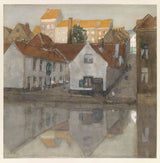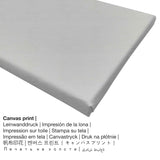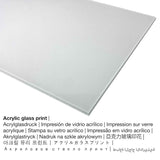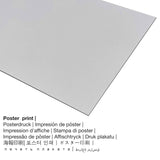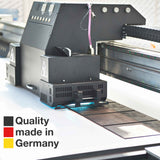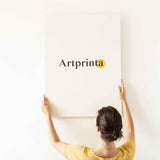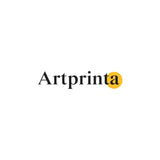George Hendrik Breitner, 1911 - Slum na Ghent - ọmarịcha nka
Ụtụ gụnyere. Mbupu gbakọrọ na ndenye ọpụpụ.
Ngwaahịa nka
In 1911 George Hendrik Breitner esere ihe osise a "Slum in Ghent". Ihe osise dị na nchịkọta nka dijitalụ nke Rijksmuseum, nke bụ nnukwu ihe ngosi nka maka nka na akụkọ Dutch site na Middle Ages ruo ugbu a. Obi dị anyị ụtọ ikwu na nke a ngalaba ọha artwork gụnyere na n'ikike nke Rijksmuseum.Ezigbo nka nka bụ: . Ọzọkwa, nhazi nke mmepụta dijitalụ bụ square ma nwee oke akụkụ nke 1: 1, nke pụtara na ogologo ya na obosara. The photographer, painter George Hendrik Breitner was a European artist, whose style can mainly be assigned to Impressionism. The Impressionist painter lived for a total of 66 afọ - a mụrụ n'afọ 1857 ma nwụọ na 1923.
Kedu ihe ebipụta nka m nwere ike ịtụ?
N'ime menu ndọpụta ngwaahịa ị nwere ike ịhọrọ ngwa na nha nke gị. Ka ị kwekọọ n'ihe ị chọrọ nke ọma, ị nwere ike họrọ n'ime nhọrọ nhazi ngwaahịa ndị a:
- Mbipụta kanvas: A UV printed canvas material mounted on a wooden frame. A canvas print has the advantage of being low in weight, which means that it is easy to hang the Canvas print without additional wall-mounts. Canvas prints are suited for any type of wall.
- Mbipụta nke aluminom: An Aluminium Dibond print is a material with a true depth. Its non-reflective surface make a modern impression. This UV print on Aluminum Dibond is the most popular entry-level product and is an extremely stylish way to showcase fine art reproductions, because it puts 100% of the viewer’s focus on the replica of the artwork.
- Mbipụta akwụkwọ mmado (ihe kwaaji): The Artprinta poster print is a printed canvas paper with a slightly rough surface structure, which resembles the original masterpiece. Please note, that depending on the absolute size of the poster print we add a white margin of approximately 2-6cm round about the work of art to facilitate the framing.
- Ugogbe acrylic ebipụtara: The acrylic glass print, often described as a print on plexiglass, will turn your favorite original work of art into stunning décor and makes a great alternative option to aluminium or canvas fine art prints. The great upside of an acrylic glass fine art print is that contrasts as well as small painting details will be recognizeable due to the very subtle gradation of the picture. Our real glass coating protects your chosen fine art print against sunlight and heat for many years to come.
Ederede iwu dị mkpa: We try our best to depict our art products as accurate as possible and to illustrate them visually in our shop. Nevertheless, the tone of the printed materials, as well as the print result can differ to a certain extent from the representation on the monitor. Depending on the screen settings and the quality of the surface, not all colors are printed 100% realistically. Because all fine art prints are printed and processed by hand, there may as well be slight deviations in the exact position and the size of the motif.
Banyere ihe
| Nkewa edemede: | nka nka |
| Usoro mmeghari: | dijitalụ mmeputakwa |
| Produzọ mmepụta: | Mbipụta UV ozugbo (mbipụta dijitalụ) |
| Production: | arụpụtara na Germany |
| Stockdị ngwaahịa: | mmepụta ihe na-achọ |
| A na-atụ aro iji ngwaahịa eme ihe: | foto mgbidi, ụlọ mmepụta nka nka |
| Ndepụta: | usoro square |
| Oke akụkụ: | ogologo ruo obosara 1: 1 |
| Nkọwa nke oke akụkụ: | ogologo ya na obosara |
| Ụdị ihe dị iche iche: | mbipụta ọla (aluminium dibond), mbipụta akwụkwọ mmado (akwụkwọ kwaaji), mbipụta kanvas, mbipụta iko acrylic (nwere ezigbo mkpuchi iko) |
| Nhọrọ nke Canvas Mbipụta (akwa akwa na etiti ihe ndọtị): | 20x20cm - 8x8 ", 30x30cm - 12x12", 50x50cm - 20x20", 70x70cm - 28x28", 100x100cm - 39x39", 150x150cm - 59x59", 180-x180cm |
| Mbipụta iko acrylic (nwere ezigbo mkpuchi iko) dị iche iche: | 20x20cm - 8x8", 30x30cm - 12x12", 50x50cm - 20x20", 70x70cm - 28x28", 100x100cm - 39x39" |
| Ụdị akwụkwọ mmado (akwụkwọ kwaaji) dị iche iche: | 30x30cm - 12x12", 50x50cm - 20x20", 70x70cm - 28x28", 100x100cm - 39x39" |
| Nhọrọ nha nha nke Dibond (ihe alumnium): | 20x20cm - 8x8", 30x30cm - 12x12", 50x50cm - 20x20", 70x70cm - 28x28", 100x100cm - 39x39" |
| Igwe onyonyo: | biko mara na mmeputakwa a enweghi etiti |
Nkọwa ọrụ nka
| Akụkụ nka: | "Slum in Ghent" |
| Nhazi nka: | sere |
| Okwu mkpokọta: | nkà nke oge a |
| Century: | 20th narị afọ |
| Emepụtara n'afọ: | 1911 |
| Afọ nka: | 100 afọ |
| Ụlọ ihe ngosi nka / mkpokọta: | Rijksmuseum |
| Ebe ngosi nka: | Amsterdam, Netherlands |
| Webụsaịtị ihe ngosi nka: | Rijksmuseum |
| Akwụkwọ ikike nka: | ngalaba ọha |
| Site n'aka: | Rijksmuseum |
Tebụl nkọwa omenkà
| Ihe nkiri: | George Hendrik Breitner |
| Aha ndi ozo: | Breitner George Hendrik, Breitner, Breitner G. H., George Hendrik Breitner, Breitner Georg Hendrik, Breitner Georges H., ברייטנר ג'ורג' הנדריק |
| Gender: | nwoke |
| Nationality: | Dutch |
| Ọrụ onye na-ese ihe: | onye na-ese foto, onye na-ese ihe |
| Mba onye si: | mba netherland |
| nhazi ọkwa: | omenkà nke oge a |
| Ụdị nka: | Mmetụta |
| Nwụrụ anwụ: | 66 afọ |
| A mụrụ: | 1857 |
| Afọ ọnwụ: | 1923 |
© nwebiisinka | Artprinta (www.artprinta.com)
Ozi nka nka izizi site n'aka Rijksmuseum (© Nwebiisinka - site Rijksmuseum - Rijksmuseum)
Slum in Ghent The Veergrep the Kortrijksepoortstraat with the foreground Lys.

